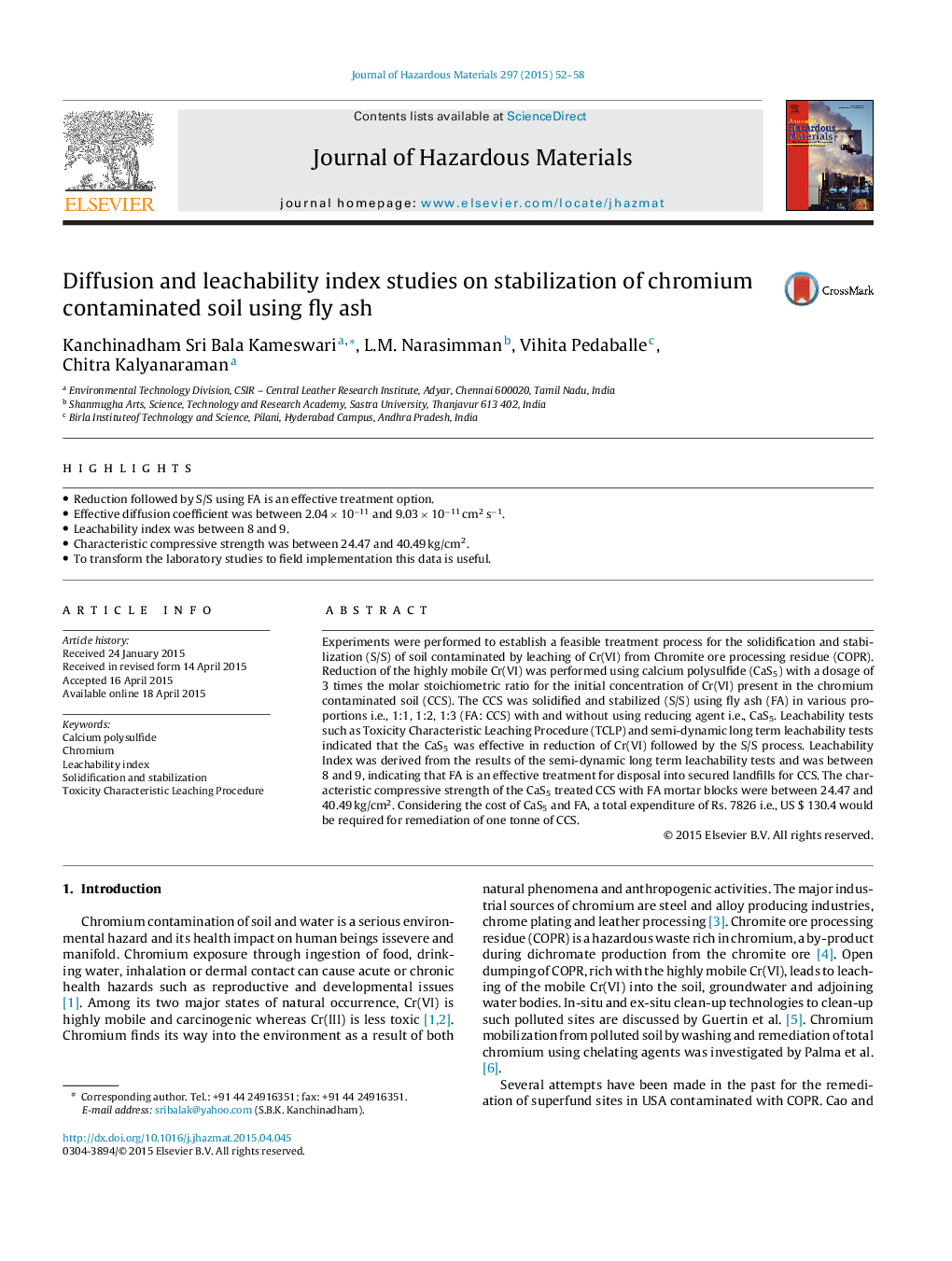| Article ID | Journal | Published Year | Pages | File Type |
|---|---|---|---|---|
| 6970784 | Journal of Hazardous Materials | 2015 | 7 Pages |
Abstract
Experiments were performed to establish a feasible treatment process for the solidification and stabilization (S/S) of soil contaminated by leaching of Cr(VI) from Chromite ore processing residue (COPR). Reduction of the highly mobile Cr(VI) was performed using calcium polysulfide (CaS5) with a dosage of 3 times the molar stoichiometric ratio for the initial concentration of Cr(VI) present in the chromium contaminated soil (CCS). The CCS was solidified and stabilized (S/S) using fly ash (FA) in various proportions i.e., 1:1, 1:2, 1:3 (FA: CCS) with and without using reducing agent i.e., CaS5. Leachability tests such as Toxicity Characteristic Leaching Procedure (TCLP) and semi-dynamic long term leachability tests indicated that the CaS5 was effective in reduction of Cr(VI) followed by the S/S process. Leachability Index was derived from the results of the semi-dynamic long term leachability tests and was between 8 and 9, indicating that FA is an effective treatment for disposal into secured landfills for CCS. The characteristic compressive strength of the CaS5 treated CCS with FA mortar blocks were between 24.47 and 40.49Â kg/cm2. Considering the cost of CaS5 and FA, a total expenditure of Rs. 7826 i.e., US $ 130.4 would be required for remediation of one tonne of CCS.
Related Topics
Physical Sciences and Engineering
Chemical Engineering
Chemical Health and Safety
Authors
Kanchinadham Sri Bala Kameswari, L.M. Narasimman, Vihita Pedaballe, Chitra Kalyanaraman,
